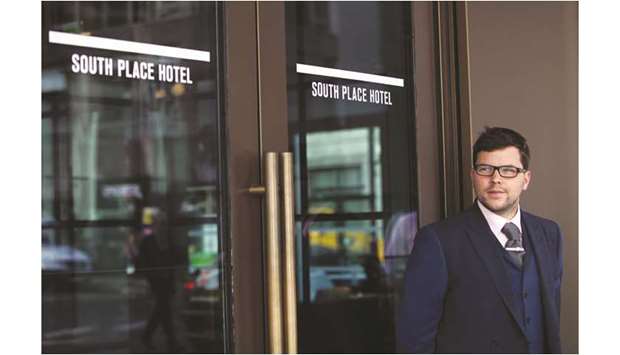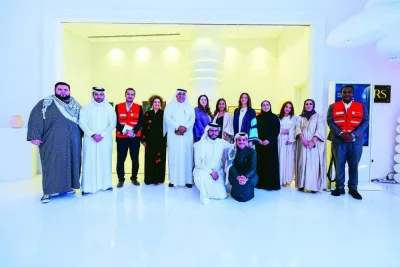New York can be harsh on foreign restaurateurs coming to town.
When D&D London opened Bluebird London in Columbus Circle in September 2018, Eater described it as “New York’s worst new restaurant of 2018.” In the New York Times, Pete Wells said: “Because you are in an English restaurant, you will be curious about the English food. Because you are in Bluebird London, you will regret this.”
But don’t go thinking a couple of bad reviews are going to deter D&D, which owns more than 40 restaurants, mainly in the UK The company went on to open Queensyard in the Hudson Yards New York development just six months after Bluebird.
Chairman and chief executive Des Gunewardena says he’s been encouraged by the reception from diners in New York and he views the US as possibly key to D&D’s expansion: “I’d rather not had rubbish reviews, but we’re feeling fine about Bluebird. It is one of our busiest restaurants.”
D&D London was founded in 2006 when Gunewardena and partner David Loewi bought Conran Restaurants, for which they worked. Conran had entered New York in 2000, when it opened Guastavino’s under the 59th Street Bridge. Guastavino’s is now run as an events space by D&D.
Gunewardena says D&D’s revenue from the three New York locations is about $30mn compared with total sales of about £160mn, or $210mn. He says the company invested a total of $20mn in the two new restaurants.
“New York is a city that — if you are successful — you can make a profit and you can build more restaurants,” he says. “So that was a natural choice in terms of diversifying away out of the UK Queensyard, in particular, has been very successful for us: It has been busy from day one and the concept would work very well in busy areas like high streets and in shopping centers.”
The company has been approached by “a number of the big developers” to open that concept, Gunewardena added.
“Where would we seriously look at opening another restaurant? Obviously New York, but we’ve been approached to open restaurants in LA, in Boston, in San Francisco, in Philadelphia,” he says. “We could go to LA. but it’s got to be probably for two or three restaurants because it’s so far away from New York. We have been approached in Miami as well.” The company is looking at specific sites in Boston and San Francisco.
“For every 20 sites we look at in London, we may end up doing one. So it is one thing looking and it is one thing entertaining the idea that we might open. But we have not yet made the decision to open any sites outside New York and we are also actively looking at a couple of sites within New York. More logical for us would be to do more in New York first but we are being approached probably more by developers who want us to do what we’ve done in Hudson Yards in other cities.”
What differences does Gunewardena see between the US and UK ?
In business terms, he says it costs about 50% more to open a restaurant in New York than in London because of building and other costs, but he expects operating profits to be at a broadly similar level once D&D is more established in the US market. He says that as a newcomer it is difficult to attract staff, for example, because tips are such an important element of remuneration.
“Everyone’s working for their tips,” he says. “So if you are an unknown restaurateur going into New York, people don’t know whether you are going to be successful. They think, ‘You might not be successful and I am not going to earn my tips.’ So you have to almost become busy and successful before you can attract really good staff. Or you’ve got to be very, very good at selling yourself.
“Customers are different, too. We learned a lot when we opened Bluebird. What they enjoy on the menu is different, so you can’t go to America and simply say, as happened with Bluebird, here is the menu from London. You have to make amendments but you’ve also got to make sure you don’t go so far that it just becomes another American menu because then you lose your point of difference.”
UK hospitality groups have a mixed record in the US, though it is generally positive.
Hakkasan got a rough critical reception when it entered New York in 2012. But the Chinese dining group now has establishments in four cities. Hakkasan’s Yauatcha brand has opened in Houston with plans for further expansion. Wagamama, a casual pan-Asian restaurant chain that was created by Hakkasan founder Alan Yau, has outlets in New York and Boston.
Gordon Ramsay’s flagship New York restaurant is long gone but his group has since opened in multiple US locations. His former protege, chef Jason Atherton, opened the Clocktower in New York in 2015 and won a Michelin star two years later. “Operating in NYC is a completely different experience to London, even though the cities share very much in common,” Atherton says.
“Everyone eats out in New York and the costs are higher, so the restaurants have to do big numbers,” he says. “In London, restaurants tend to be smaller because of the size of properties and the number of people who eat out is lower. Londoners eat at home a lot more. It’s a completely different animal.”
The Hawksmoor steak house group plans to open later this year in the United Charities Building, between Madison Square Park and Gramercy Park, co-founder Will Beckett says. Burger & Lobster has two restaurants in New York. Le Caprice (from the Ivy group) closed in New York but Soho House is going great guns at Cecconi’s, with outlets in West Hollywood, Miami Beach and Brooklyn.
And the traffic isn’t all one way: US chefs Daniel Boulud, Daniel Humm and Wolfgang Puck all have restaurants in London.

A doorman stands outside the entrance to D&D London Ltd’s South Place hotel in London. When D&D London opened Bluebird London in Columbus Circle in September 2018, Eater described it as u201cNew York’s worst new restaurant of 2018.u201d In the New York Times, Pete Wells said: u201cBecause you are in an English restaurant, you will be curious about the English food. Because you are in Bluebird London, you will regret this.u201d


